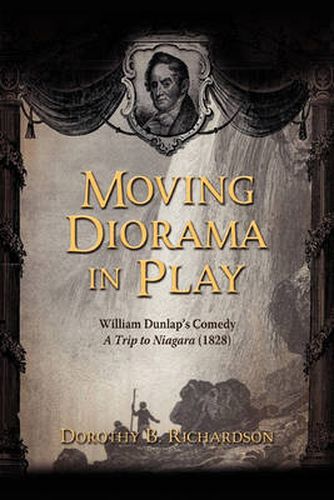Readings Newsletter
Become a Readings Member to make your shopping experience even easier.
Sign in or sign up for free!
You’re not far away from qualifying for FREE standard shipping within Australia
You’ve qualified for FREE standard shipping within Australia
The cart is loading…






A Trip to Niagara; or, Travellers in America, a three-act comedy, opened at New York’s Bowery Theatre on November 28, 1828, for a long run. Scripted and later published by William Dunlap (1766-1839), the so-called father of the American stage, this play offers a bounty to theater historians, dramatic critics, and all those interested in the American culture during Dunlap’s lifetime. This study explores the Bowery, the play’s moving diorama, the text, and the playwright, and emphasizes their interrelationships. This analysis of A Trip to Niagara as a theatrical event joins hands with dramatic criticism. An annotated transcript of the play is helpfully provided in the appendix of the book. This study contends that had there been no moving diorama, there would have been no play. Since William Dunlap called his text a running accompaniment, it should be analyzed in terms of this function. The play’s few critics have failed to do this. Hence, the interplay of the moving diorama (and conventional scenic backdrops) with the plot and characters comprises another significant segment of this study. This book makes significant contributions to studies of antebellum American theater, the Nationalist Period in American culture, and William Dunlap.
$9.00 standard shipping within Australia
FREE standard shipping within Australia for orders over $100.00
Express & International shipping calculated at checkout
A Trip to Niagara; or, Travellers in America, a three-act comedy, opened at New York’s Bowery Theatre on November 28, 1828, for a long run. Scripted and later published by William Dunlap (1766-1839), the so-called father of the American stage, this play offers a bounty to theater historians, dramatic critics, and all those interested in the American culture during Dunlap’s lifetime. This study explores the Bowery, the play’s moving diorama, the text, and the playwright, and emphasizes their interrelationships. This analysis of A Trip to Niagara as a theatrical event joins hands with dramatic criticism. An annotated transcript of the play is helpfully provided in the appendix of the book. This study contends that had there been no moving diorama, there would have been no play. Since William Dunlap called his text a running accompaniment, it should be analyzed in terms of this function. The play’s few critics have failed to do this. Hence, the interplay of the moving diorama (and conventional scenic backdrops) with the plot and characters comprises another significant segment of this study. This book makes significant contributions to studies of antebellum American theater, the Nationalist Period in American culture, and William Dunlap.